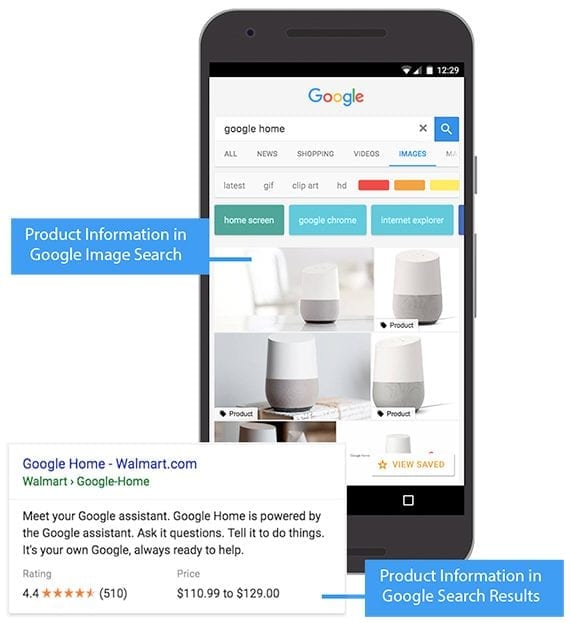Ecommerce marketers can use structured data, HTTPS protocol, product content, clean URLs, and search intent to improve search rankings and increase website traffic.
Search engine optimization seeks to help search engines such as Google, Bing, and Yahoo understand a page’s purpose and content in the hope they will serve up a highly-ranked listing in search results.
An ecommerce business could spend months or even years optimizing search engine traffic. Some SEO techniques require wholesale changes in site structure, a nearly constant flow of new content, or days of keyword research.
But with a little development expertise or the ability to turn a phrase, there are at least five SEO tactics you could execute in just a few hours.
Structured Data Markup
Structured data give search engines “explicit clues” about a web page’s content. Google, as an example, uses structured data to recognize products on an ecommerce website and share additional information about those products in the form of rich results.
JavaScript Object Notation for Linking Data (JSON-LD) is an increasingly common format for implementing structured data. There are at least two benefits to using structured data markup with JSON-LD.
First, it may increase the likelihood Google or other search engines will display a page listing with rich results. Rich results, in turn, may encourage more searchers to click on a specific result.

Rich results may include a product’s price, review information, or an opportunity to appear in other result areas like Google images.
Second, Google engineers and spokespeople have hinted that JSON-LD structured data may become a ranking factor — if it is not already. Google Webmaster Trends Analyst John Mueller, for example, said structured data “over time might flow into the rankings.” So adding JSON-LD structured data may impact rankings, too.
HTTPS
Everyone who has ever used a web browser is likely familiar with HTTP and HTTPS.
Both describe a procedure for communicating across a computer network, and both are widely used on the internet.
However, HTTPS — Hypertext Transfer Protocol Secure — takes the additional step of encrypting information before sending it across the internet.
Ecommerce sites should already be using HTTPS for any page that includes customer or payment information. But not every ecommerce website uses HTTPS for landing pages, category pages, and product detail pages. This is unfortunate since search engines like Google use HTTPS for ranking.
Effectively this means that if there are two otherwise equal product detail pages, Google may rank a page using HTTPS over one using HTTP.

Google prioritizes user security and gives preference to pages using HTTPS.
Quality Content
Search engine algorithms love original, useful, informative, and entertaining content.
From Google’s perspective, high-quality content makes for happy consumers. Google wants to provide users with the best possible search experience. When someone searches Google, that search should lead to a page that delivers the information, product, or experience the user seeks.
So why not give Google’s search bot what it wants? Add high-value content to ecommerce category and product detail pages. Consider including a short description, a long description, product specifications, and reviews.

Suitsupply has three sections of information on its product detail pages, including a product description.
—
Men’s apparel retailer Suitsupply, for example, includes on the product detail page (a) a short product description, (b) a section describing fit, and (c) a product specifications section.

Another section of the Suitsupply product detail page offers product fit information.
Clean URLs
Simple, easy-to-read URLs are an asset both for site visitors and search engine crawlers. In fact, Google recommends short, simple URLs in its search console guidelines:
A site’s URL structure should be as simple as possible. Consider organizing your content so that URLs are constructed logically and in a manner that is most intelligible to humans (when possible, readable words rather than long ID numbers).
Change ecommerce page URLs to follow common SEO patterns, such as:
domain.com/product-category domain.com/product-category/sub-category domain.com/product-name-and-keywords OR domain.com/product-category/sub-category/product-name OR domain.com/product-category-subcategory/product-name
Also:
- Avoid URL parameters such as ?_id=PXH1687Dbhda8kjd&color=darkred.
- Use dashes to separate words.
- Include keywords.
- Use lowercase letters.
Optimize for Intent
Consumers use search engines for a purpose — to learn something, find something, or, perhaps, buy something.
The action a searcher has in mind is her intent. For ecommerce SEO, focus on users with transactional intent.
This focus will include optimizing for buying-intent keyword phrases like “best laptop for students” or “best laptop for my grandma,” and making certain ecommerce pages are streamlined for conversion.
Writing on Search Engine Watch, Simon Ensor, managing director of Yellowball, a digital agency, pointed out that ecommerce landing pages should:
- Provide useful content to help visitors make a buying decision.
- Make it easy to complete a transaction.
- Have a clear call to action.
- Include “purchase” language.
“We have to make it abundantly clear to Google that if someone types in a purchase-based search term, our page is the very best result,” Ensor wrote.